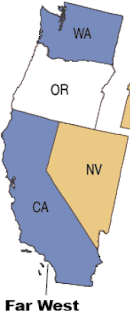Data released from September 2020 by the Health Resources and Services Administration (HRSA) revealed that nearly 60 million Americans lived in a dental care shortage areas. These areas, known as a Health Professional Shortage Area (HPSA) by the HRSA, are geographic areas, population groups, or facilities where access to healthcare services is substandard because it lacks a sufficient number of primary care, dental care, or mental health care providers. With respect to dental care, HRSA designation is based upon the number of people living within the HPSA relative to the number of dentists and dental auxiliaries (any non-dentist staff employed by the dentist to assist in the operation of the practice) that service the area. Although the population-to-provider ratio needed to qualify for designation varies by HPSA type (geographic, population or facility), all HPSAs with a dental care shortage designation have a population-to-provider ratio that meets or exceeds certain limits set by federal regulations. HRSA designated dental care shortage areas are eligible to participate in federal programs aimed at attracting more dental care providers to work with these communities. As of September 2020, close to 6,500 areas or settings qualified with the HRSA as a dental care shortage area. To eliminate all such designations, the HRSA estimates that these HPSAs would need about 10,700 additional dental care providers.
HPSAs in New England account for about 2.1% of the U.S. population who live in dental care shortage areas and roughly 1.8% of the national shortage of dental care providers. The HRSA estimates that HPSAs in New England would need about 200 additional dental care providers in order to eliminate the dental care shortage in the region. Here is a summary look at the dental care shortage in New England:
 |
| The Dental Care Shortage in New England |
| State | (1) HPSAs | (2) Population | (3) Shortage |
| CT | 38 | 394.8 | 100 |
| ME | 81 | 329.7 | 45 |
| MA | 56 | 325.2 | 21 |
| NH | 22 | 28.5 | 5 |
| RI | 14 | 160.5 | 23 |
| VT | 14 | 29.4 | 2 |
| Region | 225 | 1,268.1 | 196 |
| U.S. | 6,487 | 59,941.1 | 10,716 |






